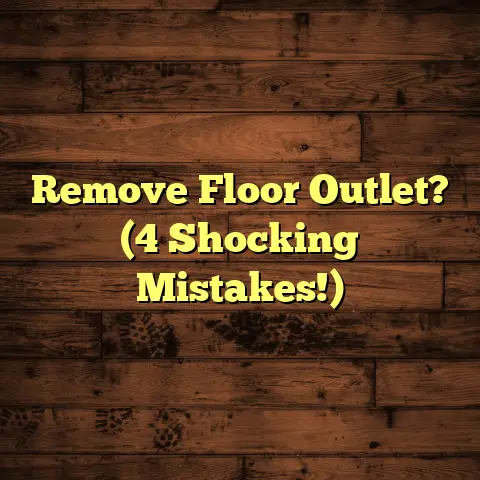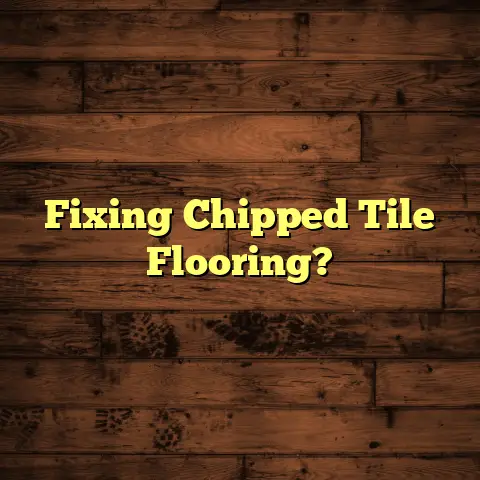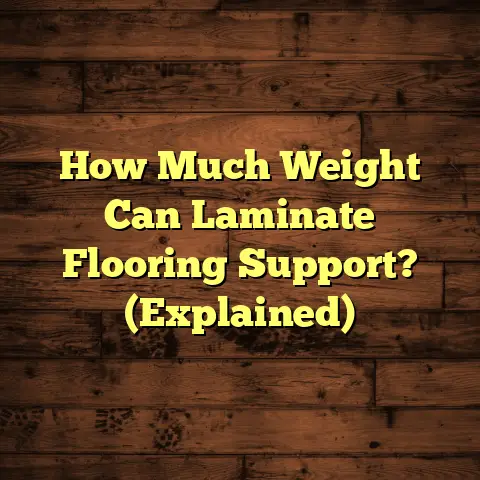Vinyl Flooring Cause Cancer? (2 Alarming Facts!)
I’ve seen trends come and go.
But one thing that’s remained consistent is the popularity of vinyl flooring.
It’s tough, resists everything from spilled coffee to muddy paws, and looks great.
But lately, I’ve been getting asked a
lot: Is vinyl flooring safe?
Does it cause
cancer?
Let’s dive into these alarming facts!
Understanding Vinyl Flooring
So, what is vinyl flooring, exactly?
Think of it as the chameleon of the
flooring world.
It comes in different forms:
-
Luxury Vinyl Tile (LVT): These mimic
the look of stone or wood, offering
realistic textures and patterns. -
Sheet Vinyl: This comes in large rolls,
making it virtually seamless and great
for moisture-prone areas like bathrooms. -
Vinyl Plank: Similar to LVT, but in
a plank format, again designed to mimic
hardwood floors.
Essentially, it’s a synthetic flooring made primarily from polyvinyl chloride (PVC) and other additives.
The manufacturing process involves heating and pressing these materials together to create a durable, water-resistant surface.
Did you know that vinyl flooring accounts for a significant chunk of the global flooring market?
It’s estimated that the global vinyl
flooring market was valued at over
\$30 billion in 2023, and is projected
to continue growing!
(Source: Grand View Research, 2024)
Its cost-effectiveness and resilience make it a go-to choice for homes and businesses worldwide.
The Composition of Vinyl Flooring
Okay, let’s get a little technical.
What’s actually in vinyl flooring?
The main ingredient is polyvinyl chloride
(PVC), a type of plastic.
To make it flexible and durable, manufacturers add plasticizers, stabilizers, and pigments.
These additives are crucial for the flooring’s performance, giving it that resistance to scratches and stains.
Now, here’s where it gets a bit tricky.
Some vinyl flooring contains volatile
organic compounds (VOCs).
These are chemicals that can be released
into the air, a process known as off-gassing.
We’ll get into why that’s a concern later.
Health Concerns Related to Vinyl Flooring
Alright, let’s tackle the first alarming fact: the potential health risks associated with vinyl flooring.
I’ve seen firsthand how poor indoor air quality can affect families.
The emission of harmful chemicals from vinyl flooring is a real concern.
Studies have shown that VOCs released from vinyl flooring can contribute to:
- Respiratory irritation
- Headaches
- Nausea
Long-term exposure has been linked to more serious health issues.
For example, a study published in the Environmental Health Perspectives journal found a correlation between VOC exposure and increased asthma symptoms in children.
Poor indoor air quality, exacerbated by VOC emissions, can be particularly problematic in homes with limited ventilation.
Imagine sealing up your house tight in the winter to save on energy bills, but also trapping these chemicals inside.
Not a great scenario, right?
The Second Alarming Fact: Cancer Risk
Here’s where things get even more serious.
The second alarming fact is the potential
link between vinyl flooring and cancer risk.
I know, it’s scary to think about.
Some studies have explored the presence of phthalates in vinyl flooring and their association with carcinogenic effects.
Phthalates are chemicals used to make plastics more flexible.
However, some types of phthalates have been linked to hormone disruption and an increased risk of certain cancers.
For instance, animal studies have shown that exposure to certain phthalates can lead to liver and testicular cancer.
While the research is still ongoing and the link isn’t definitively proven in humans, it’s certainly a cause for concern.
I’ve talked to homeowners who were shocked to learn about these potential risks after already installing vinyl flooring.
It’s a reminder that we need to be informed consumers and advocate for safer products.
Regulatory Perspectives and Safety Standards
So, what are the authorities doing about this? That’s a valid question.
In the U.S., the Environmental Protection Agency (EPA) sets standards for VOC emissions and regulates the use of certain chemicals in building materials.
The European Union (EU) has even stricter regulations, with bans on certain phthalates and limits on VOC emissions.
Organizations like FloorScore and Greenguard offer certifications for flooring products that meet specific low-emission standards.
These certifications can help consumers identify safer vinyl flooring options.
However, compliance with safety standards isn’t always consistent, and enforcement can be challenging.
It’s up to us as consumers to demand transparency and accountability from manufacturers.
Consumer Awareness and Choices
Okay, what can you do about all of this?
The most important thing is to be aware
of the potential health implications of
your flooring choices.
When shopping for vinyl flooring, look for certifications like FloorScore or Greenguard.
These certifications indicate that the product has been tested for VOC emissions and meets certain safety standards.
Consider opting for phthalate-free vinyl flooring.
Many manufacturers are now producing alternatives that don’t contain these potentially harmful chemicals.
Proper ventilation is also crucial.
After installing new vinyl flooring, open windows and use fans to help air out the room and reduce VOC levels.
I always advise my clients to do their research and ask questions.
Don’t be afraid to contact manufacturers and ask for detailed information about the materials used in their products.
Expert Opinions and Testimonials
I’m not the only one who’s concerned about the potential health risks of vinyl flooring.
I’ve spoken with health professionals who emphasize the importance of minimizing exposure to VOCs, especially for vulnerable populations like children and pregnant women.
Environmental scientists also stress the need for ongoing research to fully understand the long-term effects of vinyl flooring on health.
I’ve also heard from homeowners who have experienced health issues they believe were related to vinyl flooring.
One woman told me that her asthma symptoms improved significantly after she replaced her vinyl flooring with a low-VOC alternative.
These personal stories underscore the importance of taking these concerns seriously.
Balancing Durability and Health Risks
So, where does that leave us?
Vinyl flooring offers undeniable durability and cost-effectiveness.
But it’s important to be aware of the potential health risks, particularly concerning VOC emissions and the presence of phthalates.
As a consumer, you have the power to make informed choices that prioritize both durability and health safety.
Look for certifications, opt for phthalate-free options, and ensure proper ventilation.
The flooring industry needs to continue investing in research and developing safer products.
Call to Action:
What are your thoughts on vinyl flooring?
Have you had any experiences, good or bad,
with this type of flooring?
Share your thoughts and let’s start a
discussion about health and safety in
home improvement choices.
Let’s foster a community of informed consumers!





